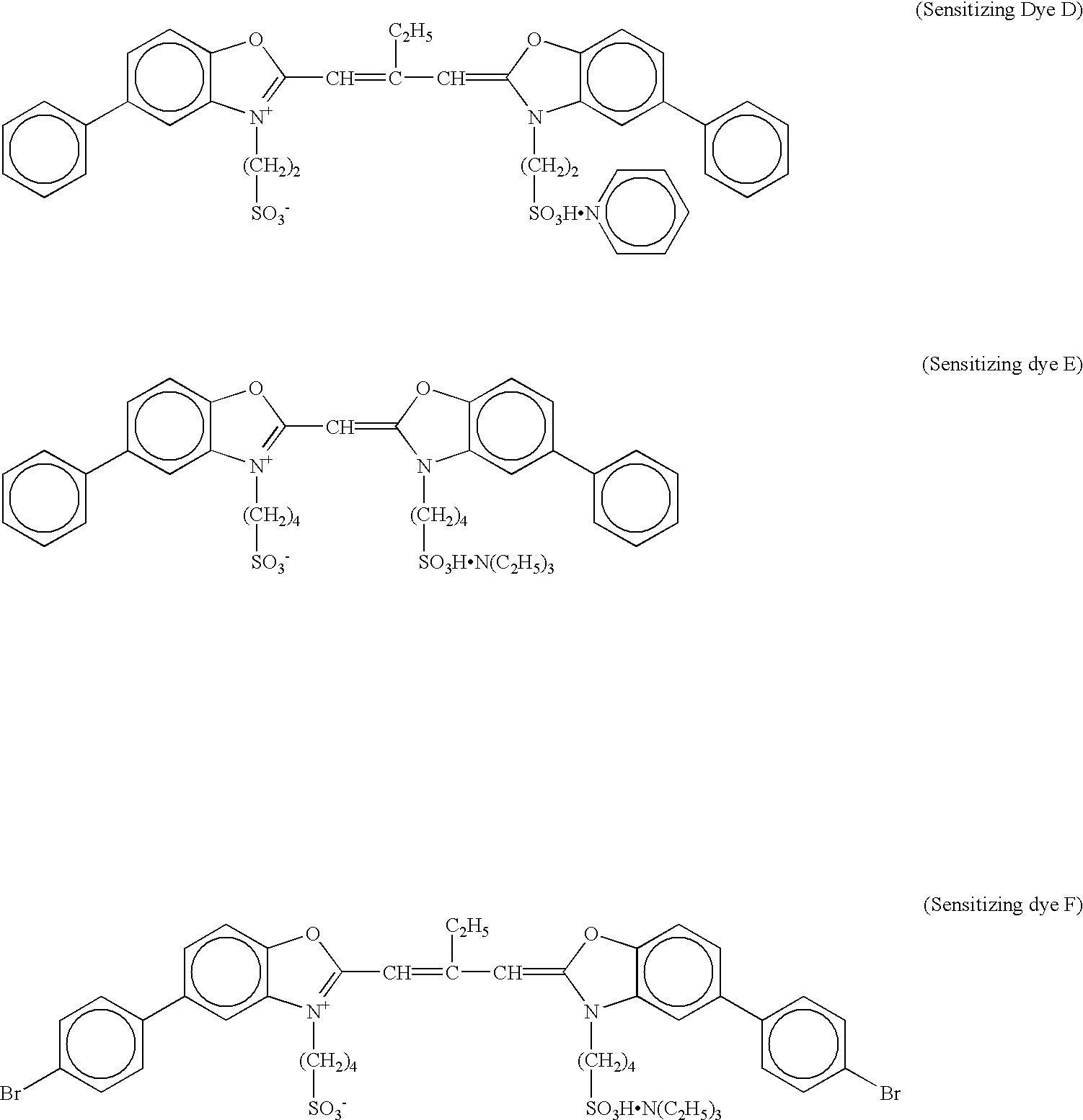Silver halide grains, silver halide emulsion, and silver halide color photographic photosensitive material
a color photographic and color technology, applied in the field of silver halide grains, silver halide emulsion, silver halide color photographic photosensitive materials, can solve the problems of low sensitivity or soft gradation enhancement, inability to suppress latent image sensitization described above, and difficulty in obtaining a stable image, etc., to achieve the effect of improving image sharpness and improving image sharpness
- Summary
- Abstract
- Description
- Claims
- Application Information
AI Technical Summary
Benefits of technology
Problems solved by technology
Method used
Image
Examples
example 1
[0167] Emulsions used for manufacturing a silver halide color photographic photosensitive material of the present invention and additional emulsions to be compared therewith were prepared as follows.
[0168]
[0169] A 10% NaCl solution (46.3 ml) was added to 1.06 l of deionized distilled water containing 5.7% by mass of deionized gelatin, followed by addition of 46.4 ml of H.sub.2SO.sub.4 (1N) and further addition of 0.012 g of a compound A. The solution temperature was then adjusted to 50.degree. C., and 0.1 mol of silver nitrate and 0.1 mol of NaCl were immediately added to a reaction vessel with vigorous stirring over a period of 10 minutes so as to form a core portion of silver halide grains.
[0170] Subsequently, 1.5 mol of silver nitrate and an NaCl solution were added over a period of 60 minutes by a flow rate accelerating method such that the final adding rate was 4 times as high as the initial adding rate so as to form a first shell portion. Then, 0.2 mol % of silver nitrate and...
example 2
[0220] Additional emulsions were prepared in the same manner as emulsions 101 to 115, except that after adding the spectral sensitizing dyes and thiosulfonate compound and before adding sodium thiosulfate and a gold sensitizer, an emulsion composed of fine grains into which iridium hexachloride had been doped, having an average grain diameter of 0.05 .mu.m and comprising 90 mol % of silver bromide and 10 mol % of silver chloride was added and subjected to ripening for 15 minutes, followed by the same processings as conducted for emulsions 101 to 115. It was confirmed that, among these additional emulsions, the emulsions which satisfied the requirements of the present invention exhibited the same excellent effects.
[0221] In the foregoing processes, iridium hexachloride was doped in an amount of 1.times.10.sup.-7 mol per mol of Ag.
example 3
[0222] The silver halide color photographic photosensitive materials as produced in Example 1 were manufactured in large amounts and used in DIGITAL PRINT SYSTEM FRONTIER 350, manufactured by Fuji Photo Film Co., Ltd., in 10 m.sup.2 per day for 3 months. It was confirmed that the silver halide color photographic photosensitive materials according to the present invention were highly sensitive, and had no pressure-induced sensitization streak when processed.
[0223] Meanwhile, the pressure-induced sensitization streaks were observed in all the silver halide color photographic photosensitive materials which had been produced for comparison, exhibiting poor results in image-quality and uneveness of printing.
PUM
 Login to View More
Login to View More Abstract
Description
Claims
Application Information
 Login to View More
Login to View More - R&D
- Intellectual Property
- Life Sciences
- Materials
- Tech Scout
- Unparalleled Data Quality
- Higher Quality Content
- 60% Fewer Hallucinations
Browse by: Latest US Patents, China's latest patents, Technical Efficacy Thesaurus, Application Domain, Technology Topic, Popular Technical Reports.
© 2025 PatSnap. All rights reserved.Legal|Privacy policy|Modern Slavery Act Transparency Statement|Sitemap|About US| Contact US: help@patsnap.com



